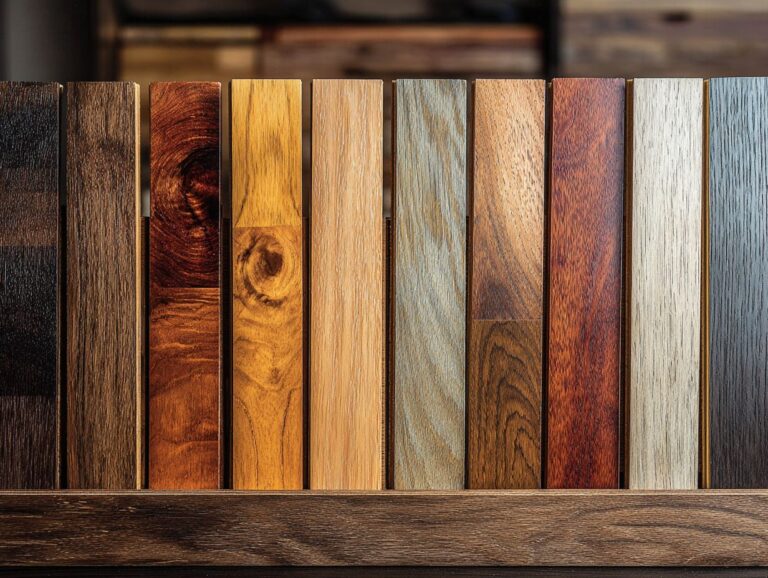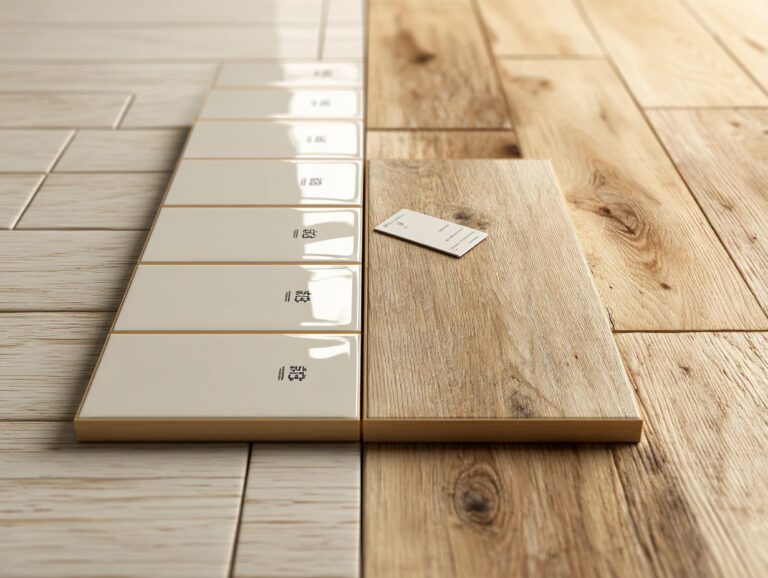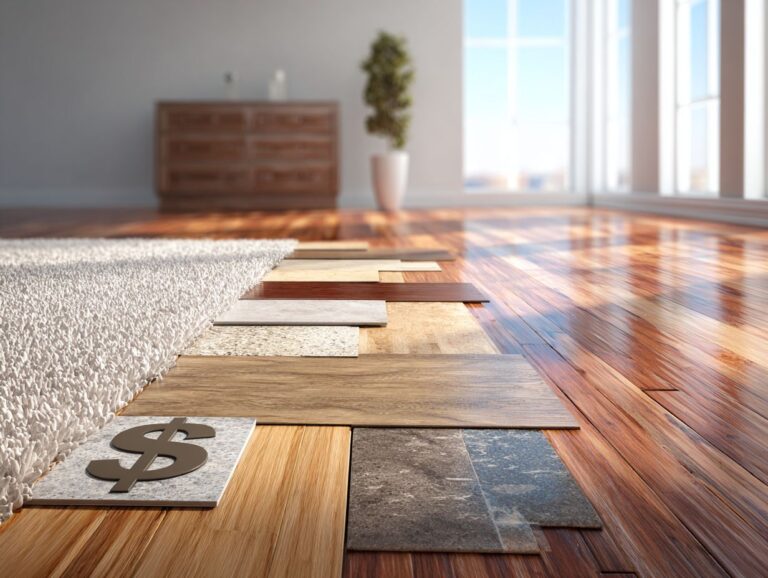Flooring Over Radiant Heat – Compatible Materials
It’s important to select flooring materials that work well with radiant floor heating for better efficiency. Whether you choose hydronic radiant systems or electric radiant systems, both provide energy-saving heating that improves comfort. This article will guide you through the best flooring options that work harmoniously with radiant heating, ensuring warmth and style in your home. Learn how to choose materials for a comfortable and practical home.
Key Takeaways:
Contents
- Choosing the Right Flooring Materials
- Types of Flooring Compatible with Radiant Heat
- Radiant Heat Flooring Material Statistics
- Materials to Avoid with Radiant Heat
- Installation Considerations for Flooring Over Radiant Heat
- Maintenance of Flooring with Radiant Heat
- Frequently Asked Questions
- What is radiant heat and why is it important to consider when choosing flooring materials?
- What types of flooring are compatible with radiant heat?
- Can I install any type of flooring over radiant heat?
- What are the benefits of using compatible flooring materials with radiant heat?
- What are some factors to consider when choosing flooring materials for radiant heat?
- Can I install radiant heat under existing flooring?
What is Radiant Heat Flooring?
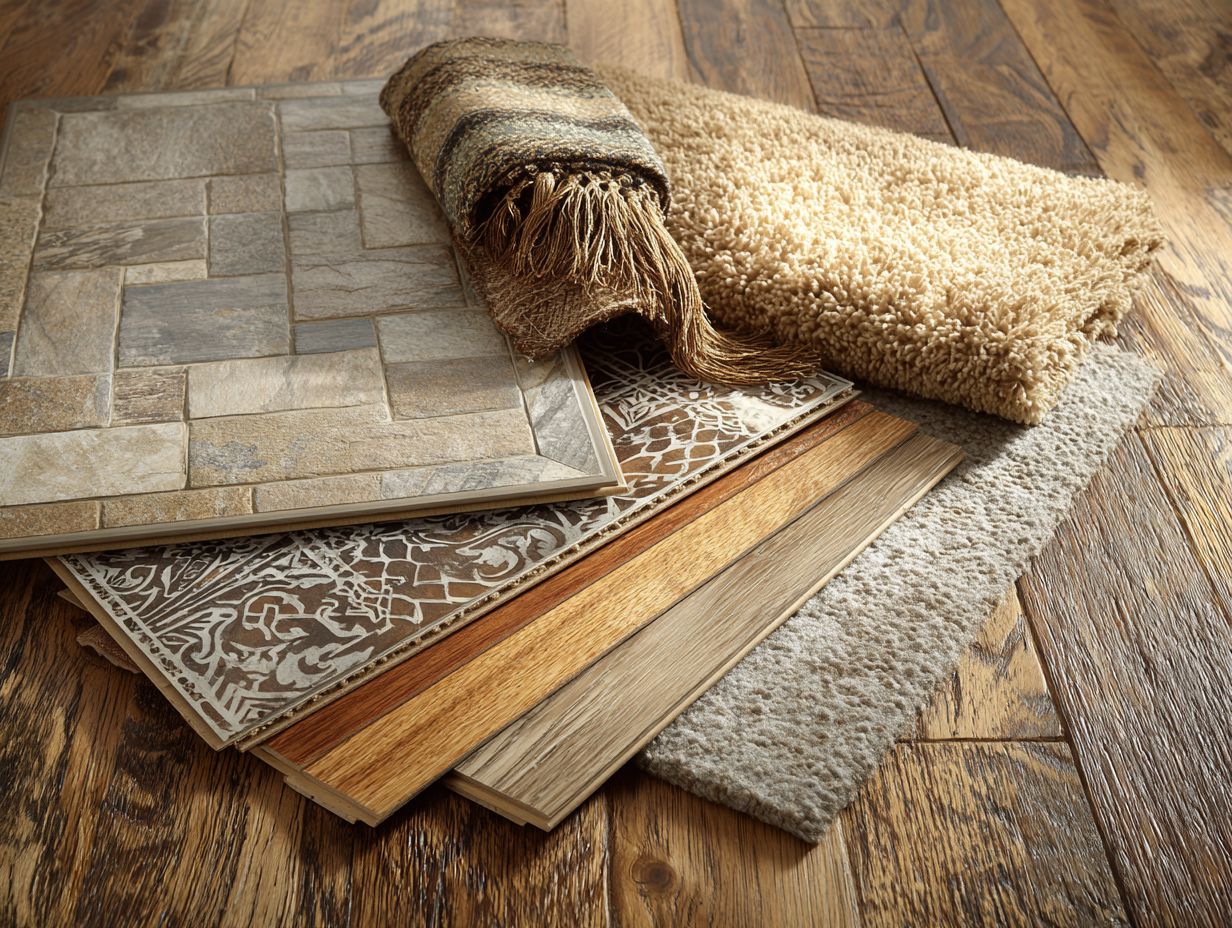
Radiant heat flooring systems come in two main types: water-based and electric. Each type offers specific benefits for various needs.
Hydronic systems use heated water that flows through pipes under the floor, offering even warmth and energy-saving benefits, particularly in big areas, with installation costs beginning at about $6-$8 per square foot.
In contrast, electric systems heat wires or mats installed under the flooring, which can be less expensive and easier to retrofit in smaller areas, generally costing $8-$12 per square foot.
When deciding, consider your heating needs, room size, and budget, as well as the potential energy savings from improved insulation and more efficient heating methods.
Benefits of Radiant Heat Systems
Implementing a radiant heating system can lead to energy savings of up to 30% compared to traditional heating methods, improving overall thermal comfort in residential properties.
Along with savings, radiant heating provides even warmth throughout the space, eliminating cold spots common with forced air systems. Homeowners often report improved air quality since there is no dust circulation.
For instance, a family in Chicago installed radiant heating and noted a 25% reduction in their heating bill while enjoying a more comfortable environment during winter.
Using programmable thermostats also maximizes efficiency, allowing homeowners to set schedules that align with their daily routines.
Choosing the Right Flooring Materials
Picking the right flooring materials is important for getting the best results from radiant heat flooring systems. Selecting materials that are compatible with these systems ensures efficient heat distribution and longevity (our guide to radiant heat compatible flooring highlights safe options).
Importance of Material Compatibility
How well flooring can transfer heat affects the efficiency and energy consumption of radiant heating systems.
Ceramic tiles are recommended because they spread heat effectively, ensuring a room is warmed consistently. Polished concrete is an affordable option that facilitates electricity flow.
Carpet and vinyl do not allow heat to move well, leading to heat accumulation and lowering the system’s effectiveness. When selecting materials, consider their thermal properties, installation costs, and aesthetic effects to create a balanced system that meets both functional and design needs.
Factors Affecting Compatibility
Different aspects affect how well flooring works with radiant heat systems, such as how well the material withstands moisture, its thickness, and how it is installed.
Picking the best flooring for radiant heat means knowing how well the materials move heat and handle moisture.
Porcelain tile is a great option because it spreads heat well and doesn’t absorb water. On the other hand, hardwood can cause issues if not treated correctly.
Make sure the flooring isn’t thicker than the manufacturer’s limits; usually, materials less than 0.5 inches are ideal. Using a thin-set mortar for installation can improve performance by allowing better heat transfer.
Related insight: Best Flooring Over Concrete Slabs – Moisture Barriers highlights solutions for moisture management, crucial when selecting radiant heat compatible materials.
Always check the radiant heat system instructions to make sure it works with your chosen material.
Types of Flooring Compatible with Radiant Heat
There are different types of flooring that work well with radiant heat systems.
Each type has its own benefits and needs for best results.
Radiant Heat Flooring Material Statistics
Radiant Heat Flooring Material Statistics
Thermal and Energy Efficiency: Radiant Heating Efficiency
Floor Covering Statistics: Preferred Materials
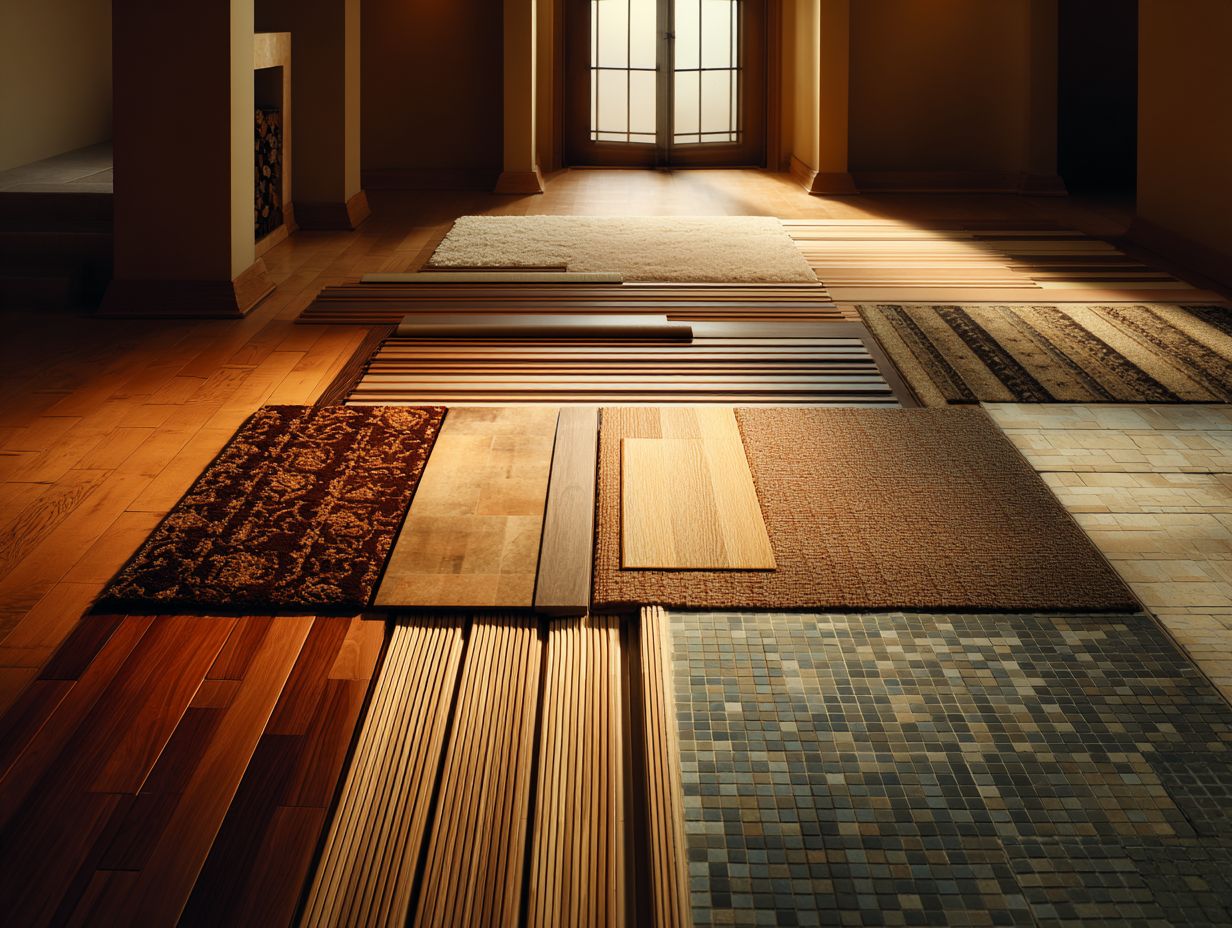
The Radiant Heat Flooring Material Statistics Provides information about how well radiant heating systems work and the materials commonly chosen for these setups. This information shows the balance between heat efficiency and the right materials, important for improving comfort and saving energy in buildings.
Thermal and Energy Efficiency metrics show that radiant heating systems cover 50% of heat transfer needs effectively. Half of the necessary heat can be provided by this system, decreasing the need for conventional heating methods. Additionally, building energy consumption for heating is 21.2% Radiant heating can greatly help in reducing total energy consumption, making it a good choice for people who want to save energy.
- Floor Covering Statistics: The preference for ceramic tile and laminate wood in radiant heating installations is evident, with both materials showing 100% usage and recommendation rates. Ceramic tiles are ideal because they distribute heat evenly due to their excellent heat conduction. Laminate wood, on the other hand, offers versatility and aesthetic appeal, while still being compatible with radiant heat systems.
The unanimous recommendation of ceramic tiles and laminate wood indicates their effectiveness and consumer trust in these materials for radiant heat applications. These materials improve the heating system’s efficiency and keep the floor strong and looking good over time.
In conclusion, the Radiant Heat Flooring Material Statistics Highlight how well radiant heating systems work and the importance of choosing the right materials to save energy and increase comfort. By choosing the right materials, such as ceramic tiles and laminate wood, consumers can maximize the benefits of radiant heating systems, achieving both cost savings and a more comfortable living environment.
Tile Flooring
Tile flooring, particularly porcelain and ceramic tiles, is a great option for radiant heat systems because it transfers heat effectively and is durable.
Along with thermal benefits, tile flooring is compatible with various installation methods, including thin-set and backer board applications.
It is tough and can resist scratches, stains, and moisture, which makes it perfect for busy places like kitchens and bathrooms.
Keeping it clean is easy; just sweep and mop regularly.
Installation costs vary from $4 to $12 per square foot, depending on tile type and region, so it’s wise to get multiple quotes. Hiring an expert can help achieve correct alignment and reduce waste.
Stone Flooring
Natural stone flooring adds lasting beauty to homes and works very well with radiant heating systems, providing good heat distribution.
This type of flooring excels in durability, resisting scratches and wear over time. Granite is known for being strong and comes in different colors. Marble has distinctive veins that make it look more attractive.
Installation costs range from $10 to $25 per square foot, depending on the material. Consider hiring a professional to check that everything is properly sealed and maintained.
Underfloor heating with stone makes floors warm, enhancing comfort during cold months. It is a practical and appealing choice.
Engineered Wood Flooring
Engineered wood flooring works well with radiant heat systems because its layers make it stable against temperature changes and keep moisture away.
Engineered wood stays stable and doesn’t bend or twist with temperature changes, unlike solid hardwood, making it a reliable option for homes in areas with varying weather.
Installation methods include floating, glue-down, or nail-down, each affecting the overall cost. On average, you might pay between $3 and $15 per square foot, depending on the wood species and thickness.
For added efficiency, consider using a moisture barrier to protect against humidity, ensuring long-term durability and performance.
Luxury Vinyl Plank (LVP)
Luxury Vinyl Plank (LVP) is a highly flexible flooring option that withstands moisture and spreads heat well from radiant systems.
Putting in LVP with radiant heat is cost-effective and easy. The material typically costs between $2 and $7 per square foot, making it a budget-friendly choice for homeowners.
To install, first check that the subfloor is clean and even. Use a vapor barrier if moisture is a concern, then lay down an underlayment designed for sound absorption.
Click the planks together for a seamless finish, which can usually be completed in a day for an average-sized room, saving on labor costs as well.
Carpet with Radiant Heat
While not the most ideal, certain carpets can be used with radiant heat systems if they have a low thermal resistance.
When selecting carpets for radiant heat, focus on materials like wool or nylon, which have lower thermal resistance and better insulation properties.
Look for carpets with a density of at least 40 ounces per square yard and a thickness less than 0.5 inches. Options such as Berber wool carpets and low-pile nylon are often good choices.
Expect to pay between $3 and $10 for each square foot of carpet, based on the quality and brand. Plan your budget to make sure the carpet works well with your heating system.
Materials to Avoid with Radiant Heat
Some types of flooring can reduce the effectiveness and functionality of radiant heating systems, which may cause problems.
Solid Hardwood Flooring
Solid hardwood flooring is not recommended for radiant heat systems due to its susceptibility to temperature fluctuations, which can lead to warping and damage.
These fluctuations can cause immediate problems and long-term damage to the flooring. Many homeowners have reported gaps forming between planks as the wood expands and contracts with heating cycles.
Proper installation is challenging; solid hardwood requires a nail-down method, limiting its use over radiant heat setups that need a floating or glue-down approach. Instead, consider engineered hardwood, which uses layers of plywood for stability against heat, or alternatives like luxury vinyl plank, designed specifically for radiant heat compatibility.
Laminate Flooring
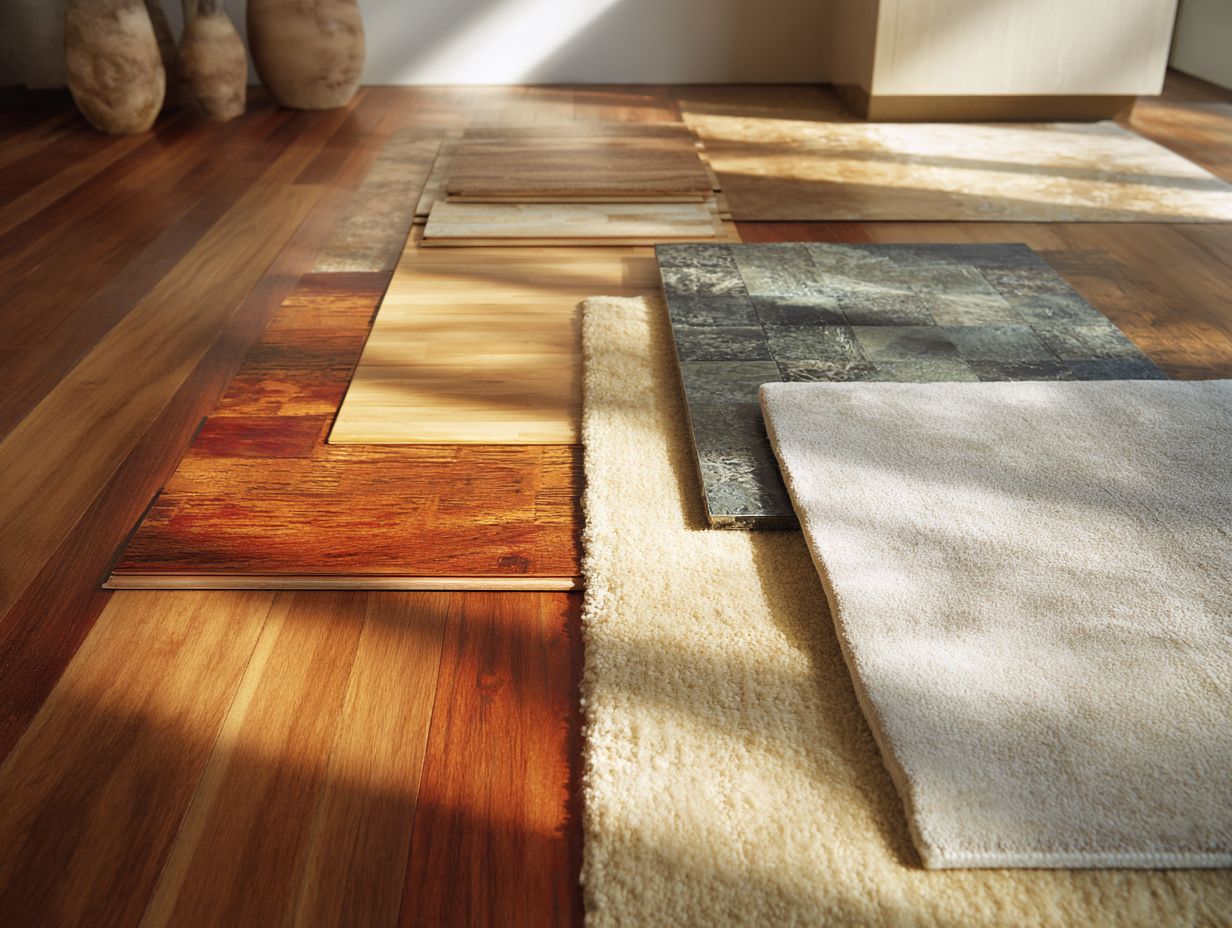
Traditional laminate flooring usually does not keep heat well, so it does not work well with radiant heating systems.
This flooring is made primarily of composite wood, which can warp or buckle under high temperatures. When radiant heat is applied, the core can absorb heat unevenly, leading to expansion and contraction that damages the planks.
Laminate does not insulate well, so it is not good at keeping indoor temperatures comfortable. For optimal results with radiant systems, consider alternatives like engineered hardwood or tile, which can withstand heat fluctuations and maintain their integrity over time.
Thick Carpeting
Thick carpeting can block radiant heating systems, reducing their efficiency.
This inefficiency arises because the carpet traps heat, preventing it from penetrating effectively to warm the room. Ideally, materials with low thermal resistance, like tile or hardwood, should be used; these allow for better heat transfer.
For instance, a standard area rug can reduce heating efficiency by up to 20%. Homeowners should think about using thermometers that react to heat or specific types of flooring to keep an eye on surface temperature. This helps maintain comfort and use energy effectively.
Installation Considerations for Flooring Over Radiant Heat
Proper installation is important for radiant heat flooring systems to work well. It needs careful preparation of the flooring materials.
Preparation of Subfloor
Preparing the subfloor correctly is essential for ensuring a level surface that maximizes the efficiency of radiant heat systems.
- Start by testing the moisture levels using a moisture meter, ensuring readings are below 12% for wood subfloors.
- Next, level the surface using a self-leveling compound, which typically costs between $1 and $2 per square foot.
- Repair any significant dips or cracks with patching materials, and consider installing a vapor barrier for added moisture protection.
- Allow the new leveling compound to cure per manufacturer instructions, usually 24-48 hours, before proceeding with your radiant heat installation.
Acclimation of Materials
Acclimating flooring materials before installation is critical to prevent issues related to expansion and contraction due to temperature changes.
Let laminate and engineered wood floors sit in the room where they will be installed for one to two days so they can adjust properly. Maintain indoor temperatures between 60 degreesF and 80 degreesF with relative humidity levels of 30-50%. For solid hardwood, aim for a minimum of 48 hours under the same conditions.
Make sure to remove any packaging materials to facilitate air circulation. Monitoring tools like a hygrometer can help track humidity levels, ensuring your flooring has the best chance of settling properly before installation.
Installation Techniques
Using proper installation methods is important to make sure flooring lasts and works well over radiant heat systems.
Begin by selecting the right flooring material; hardwood and laminate are popular choices, with costs ranging from $2 to $10 per square foot.
For installation, use a moisture barrier to protect the flooring from heat fluctuations. Typically, a staple-down or glue-down method works best.
Make sure the subfloor is flat and clean; apply a leveling compound if needed.
Tools like a trowel and adhesive are essential for glue-down installations, while a pneumatic stapler is ideal for staple-down setups.
These preparations help in achieving efficient heat distribution and preventing damage.
Maintenance of Flooring with Radiant Heat
Looking after your floors often can make them more durable and function well with radiant heating systems.
Cleaning Recommendations
To keep floors in good condition over radiant heating, follow specific cleaning guidelines to prevent damage and extend their lifespan.
-
For hardwood, use a pH-neutral cleaner like Bona (around $15) and mop gently, ensuring the floor is only damp, not wet.
-
Laminate surfaces benefit from a dry mop with a microfiber cloth and occasionally a lightly damp one for deeper cleans.
-
Tile flooring can tolerate a vinegar-water solution for tough stains, but avoid it on natural stone.
-
Vacuum the floors weekly and mop them every two weeks to keep them clean and well-maintained.
-
Opt for eco-friendly products to reduce chemical exposure and protect your floors.
Long-term Care Tips
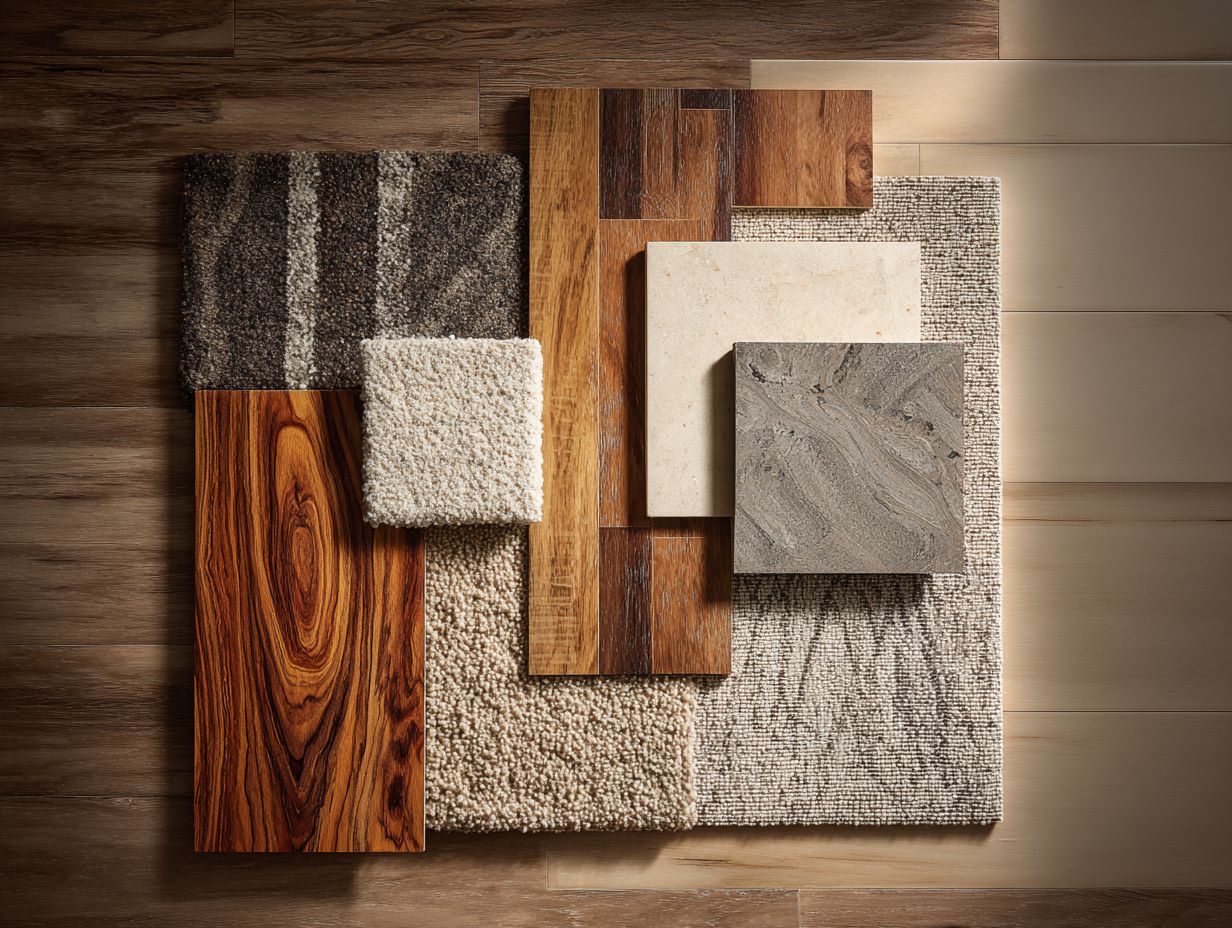
Using long-term care methods helps keep floors in good shape and working well when placed over radiant heating systems.
To protect your flooring, focus on key maintenance measures.
Maintain indoor humidity levels between 40-60% to prevent moisture buildup that can warp materials. Check often for any wear or damage and fix problems quickly to prevent expensive repairs.
For cleaning, use a damp mop with a pH-neutral cleaner, as harsh chemicals can degrade finishes. Placing mats at entrances can reduce dirt and moisture tracked inside.
Following these steps regularly will help your flooring last longer, look good, and maintain its thermal efficiency.
Final Thoughts on Compatible Flooring
Choosing the best flooring materials for radiant heat systems improves energy efficiency and makes your home more comfortable.
When choosing materials, consider options like engineered hardwood, which offers excellent thermal transfer and stability, or tile, known for its heat retention capabilities.
Bamboo is a sustainable choice that performs well with radiant heat. Make sure to use the right base layer before installation. A thin cork layer can help with heat transfer and reduce noise.
Always consult with a professional to assess your home’s insulation and flooring compatibility, ensuring the best results in warmth and comfort.
Frequently Asked Questions
What is radiant heat and why is it important to consider when choosing flooring materials?
Radiant heat is a type of heating system that uses tubes or electric wires installed under the flooring to directly heat the room. It is important to consider when choosing flooring materials because certain types of flooring may not be compatible with radiant heat and can cause damage or inefficiency.
What types of flooring are compatible with radiant heat?
Generally, hard surface flooring materials such as tile, stone, and hardwood are compatible with radiant heat. These materials can transfer heat well and won’t be harmed by the heat source. Some types of carpet, specifically low-pile or looped carpets, can also be used with radiant heat.
Can I install any type of flooring over radiant heat?
No, it is important to consult with a professional before installing any type of flooring over radiant heat. Some types of flooring, such as laminate or vinyl, may not be suitable for use with radiant heat and can cause issues with the heating system and the flooring itself.
What are the benefits of using compatible flooring materials with radiant heat?
Using flooring materials that work well with radiant heat can make the heating system work better and lower energy expenses. It can also provide a more comfortable and consistent warmth throughout the room. Flooring materials that match well will not get harmed by the heat and will last longer.
What are some factors to consider when choosing flooring materials for radiant heat?
When selecting flooring for radiant heat, you should think about how well the material transfers heat, how long it lasts, and how it works with radiant heat systems. You should consider the kind of subfloor and how much moisture is in the room to make sure the flooring will work well for that situation.
Can I install radiant heat under existing flooring?
It is possible to install radiant heat under existing flooring, but it may require removing the current flooring and subfloor to properly install the heating system. It is best to consult with a professional to determine the feasibility and potential cost of this type of installation.
